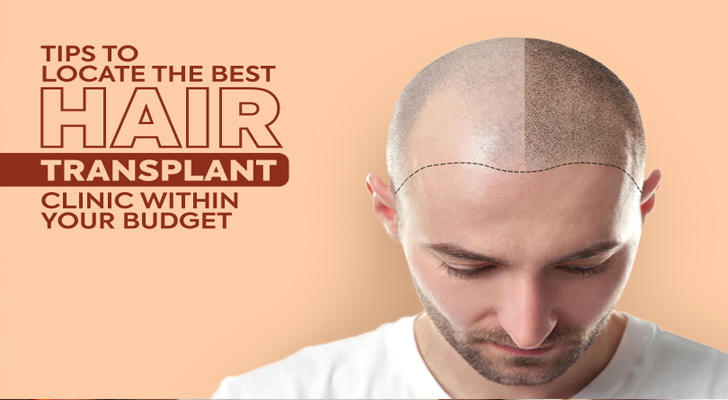Revolutionize Your Hair with Advanced Hair Transplantation Techniques
In today's world, hair loss can be a significant concern for many individuals. It not only affects one's appearance but also impacts self-confidence and overall well-being. Fortunately, advancements in medical technology have led to the development of highly effective hair transplantation techniques. These procedures offer a permanent solution to hair loss, providing natural-looking results that can transform lives.

1. Introduction to Hair Transplantation
Hair transplantation involves moving hair follicles from one part of the body to another, typically from the back and sides of the head to the balding areas. This procedure is performed by skilled surgeons who use specialized techniques to ensure minimal scarring and optimal results. According to recent studies, over 90% of patients report satisfaction with their hair transplantation outcomes, highlighting the effectiveness of this procedure (Source: International Society of Hair Restoration Surgery).
2. Benefits of Hair Transplantation
The benefits of hair transplantation are numerous:
•Natural Appearance: Transplanted hair grows naturally, allowing for styling as one would with their original hair.
•Permanent Results: Unlike temporary solutions like wigs or hairpieces, transplanted hair is permanent.
•Boosts Confidence: A fuller head of hair can significantly enhance self-esteem and confidence.
•Minimally Invasive: Modern techniques are designed to be less invasive, reducing recovery time and discomfort.
Case Study: Real-Life Success Stories
One notable example is John, a 35-year-old who suffered from significant hair loss due to genetics. After undergoing a follicular unit extraction (FUE) procedure, John reported a dramatic improvement in his hair density and overall appearance. He noted, "The transformation was incredible. I feel more confident than ever before."
3. How Hair Transplantation Works
The process typically begins with a consultation to assess the extent of hair loss and determine the best course of action. On the day of the procedure:
•Preparation: The donor area is prepared, and local anesthesia is administered to minimize discomfort.
•Extraction: Hair follicles are carefully extracted from the donor site.
•Implantation: These follicles are then implanted into the recipient sites, where they will grow naturally over time.
4. Types of Hair Transplantation Techniques
There are two primary techniques used in hair transplantation:
•Follicular Unit Transplantation (FUT): This method involves removing a strip of hair-bearing skin from the back of the head, which is then dissected into individual follicular units for transplantation.
•Follicular Unit Extraction (FUE): This technique involves extracting individual follicular units directly from the donor area without removing a strip of skin. FUE is known for its minimal scarring and faster recovery time.
5. Choosing the Right Clinic
When considering hair transplantation, it is crucial to select a reputable clinic with experienced surgeons. Factors to consider include:
•Expertise: Look for clinics with a proven track record and skilled professionals.
•Technology: Ensure the clinic uses the latest equipment and techniques.
•Patient Reviews: Read testimonials from previous patients to gauge satisfaction levels.
6. Practical Steps for Preparation and Recovery
Preparation
•Consultation: Schedule a consultation to discuss your options and create a personalized plan.
•Medication: Follow any pre-procedure medication instructions provided by your surgeon.
•Rest: Plan for adequate rest before and after the procedure.
Recovery
•Post-Procedure Care: Follow the surgeon's instructions for wound care and medication.
•Avoid Strenuous Activities: Refrain from heavy exercise or bending for several days post-procedure.
•Follow-Up Appointments: Attend scheduled follow-up appointments to ensure proper healing.
Additional Tips for Optimal Results
•Maintain a Healthy Lifestyle: A balanced diet and regular exercise can promote healthy hair growth.
•Avoid Smoking: Smoking can impede blood flow and affect healing.
•Manage Stress: High stress levels can contribute to hair loss; consider stress management techniques like meditation or yoga.
Conclusion
Hair transplantation offers a life-changing opportunity for those struggling with hair loss. With its natural results, permanent solution, and minimal invasiveness, it has become a preferred choice for many. By understanding the process, selecting the right clinic, and following practical steps for preparation and recovery, individuals can embark on a journey to restore their hair and regain their confidence. Whether you're in the United States, Europe, or Asia, this advanced medical solution is available to help you achieve the hair you've always wanted.
Moreover, advancements in technology continue to improve the outcomes of hair transplantation. For instance, robotic-assisted systems are being integrated into some clinics to enhance precision and efficiency. As research progresses, we can expect even more innovative techniques to emerge, further increasing the accessibility and effectiveness of hair transplantation.
In conclusion, hair transplantation is not just a medical procedure; it's a path to regaining confidence and enhancing one's quality of life. By embracing this technology and taking the necessary steps, individuals can look forward to a future with a fuller, healthier head of hair.
